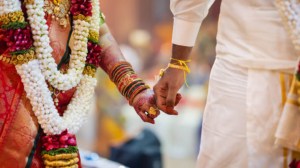The President who went by the book
In late President R Venkataramans own words,from Rajamadam village to Rashtrapati Bhawan is a long journey....
In late President R Venkataramans own words,from Rajamadam village to Rashtrapati Bhawan is a long journey. The 98-year-old led a lively life and in his five-year tenure as President,between 1987 and 1992,he saw four Prime Ministers,Rajiv Gandhi,V P Singh,Chandrashekhar and P V Narasimha Rao all of whom he outlived.
Beginning his career as a grassroots political activist and then a trade union lawyer (subsequently,a trade union leader),he served time in jail during the Quit India Movement launched in 1942. An old-time member of the Congress party,he held opinions and spoke on issues that angered many of his old party leaders. But as he himself says in his account of his years in Rashtrapati Bhawan,My Presidential Years,he initially attracted the attention of the then PM Jawaharlal Nehru for his active participation in parliamentary debates,after which he was picked as one of the delegates from India to speak at the UN General Assembly debates.
He served as Industries Minister under the legendary Kamaraj,and then went on to serve as a member of the Planning Commission,Union Finance Minister,Defence Minister,and then Vice-President of the country.
Associates recall his meticulous administrative skills and the important part he played in the industrialisation of Tamil Nadu. Those who were with him say he could reel off facts about the power situation in his state even several years later.
But India will remember him most for his tenure as the President,which came at the beginning of what was to be a tumultuous and fascinating phase when caste,religion and even finance were reshaping Indian politics.
India found itself in a highly unstable state,barely five years after the Congress had swept the House with just short of three-fourths majority. If the other later President K R Narayanan is known for introducing the concept of Letters of Support to be procured from supporting prospective coalition partners,Venkataraman had to go about asking each party leader in the Lok Sabha if they could form the government.
Somnath Chatterjee,Speaker of the Lok Sabha today,was the leader of the CPM in the Lok Sabha in 1990,and recalls when he was called by President Venkataraman to enquire if his party could form the government once V P Singhs government fell. The numbers seemed clear,but the question was asked and answered with both sides keeping a straight face and doing what was proper.
Says Chatterjee,He followed assiduously and with total sincerity what he felt was the correct interpretation of constitutional norms when it came to choosing the PM when the country was stepping into the coalition era. Though it may not always be a workable proposition,he went through the process with total commitment.
People across the political spectrum second Venkataramans love for due process. Says senior journalist and associate Cho Ramaswami,editor,Tughlaq,from Chennai: He went by the letter and spirit of the Constitution,and was very correct,paying attention to all constitutional procedures.
Says Cho of Venkataramans post-presidential thinking and politics: The Congress could not have been very happy with him in his later years because he was not inimical to other parties the way they wanted him to be.
A devotee of late Sri Chandrasekarendra Saraswathi,the Shankaracharya of Kanchi,he approached Cho in the mid-nineties to condense all of the Shankaracharyas discourses,of 7,000 pages into 200 pages,with explicit instructions,that not a word of Chos should be included! Says Cho,The work came out as a Tamil book called Hindu Dharma.
In the 90s,after he demitted office,it was not just Venkataramans love and devotion to the cause of Hindu spirituality that attracted comment and admiration in some circles,but eyebrows were raised when he openly associated with parties emphasising religious identity.
In 1998,when BJP leader A B Vajpayee was fasting against the decision of the Centre to dismiss the UP government and install Jagdambika Pal as the CM,Venkataraman offered him the sip of lime juice that formally ended his protest. This naturally embittered his ties with the Congress,which wanted to claim him fully at the time.
Venkatarmans account of his presidential years was published in 1994,and he records in his epilogue the two occasions when the political parties did not rise to the occasion. The first was when both Muslim MPs,who met him in 1991,and the BJP leaders,led by A B Vajpayee refused to accept a solution to the Babri Masjid as one shared by both communities. The second occasion he cites is when at the turn of the decade when India was in a grave financial crisis,parties refused to come together and form a national government to tide over the situation as they had done in England in 1930,when the country went off the Gold Standard and suffered a grave exchange rate crisis.



- 01
- 02
- 03
- 04
- 05




























